MILITARY NURSES - IDENTIFYING UNIFORM
*****
It can be quite a problem to tell the difference between the various types of uniform worn by members of the British military nursing services during the Great War. Each of the individual services were distinguishable by slight variations in their uniforms which are easy to miss for the uninitiated. I've added some photos here with an explanation of what they represent, and hope that it will make life a bit easier when trying to spot small differences in dress. Although of course almost all images of that time were taken in black and white, my descriptions will add a bit of colour as well to brighten up a sea of grey.
1. QUEEN ALEXANDRA'S IMPERIAL MILITARY NURSING SERVICE
The 'regular' arm of QAIMNS was formed in 1902 from the old Army Nursing Service, and other than hemlines slowly rising, ward uniform remained virtually unchanged until the Second World War.
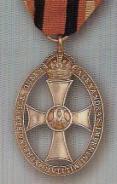
Q.A.I.M.N.S. MATRON
Grey serge or alpaca dress, with scarlet cape and scarlet cuffs and white muslin cap. The oval silver service badge worn on the right lapel of the cape. The photo shows a Principal Matron, the uniform identical, but can be distinguished by the white edges to her scarlet cuffs which are absent in the rank of Matron.

**
Q.A.I.M.N.S. NURSING SISTER
Grey dresses of ‘washing’ material for normal ward wear, with scarlet cape and white cuffs and white muslin cap. Two scarlet bands, one inch wide worn on the lower arm above the cuff signified the rank of Nursing Sister. The oval silver service badge worn on the right lapel of the cape. This sister is also wearing service stripes on her right forearm, denoting the length of her overseas service.
The uniform of the Q.A.I.M.N.S. Staff Nurse was as for the Nursing Sister, except:
Plain sleeves with no scarlet bands. The service badge, though identical in size and shape, was in bronze(* see second image below) – on promotion to Nursing Sister this badge was returned and replaced by one in silver.
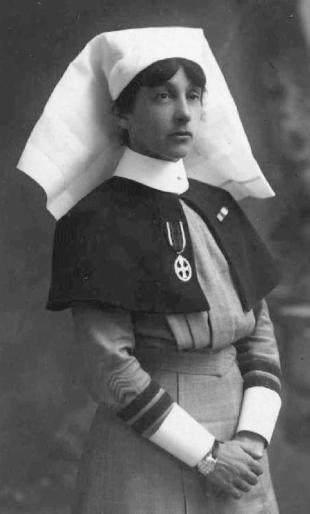
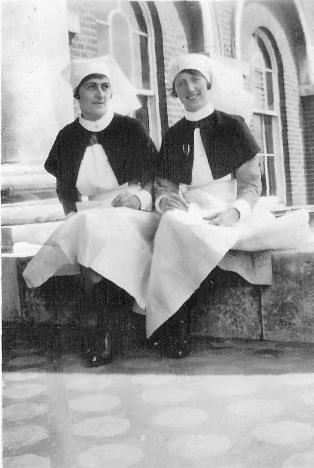
*Although indistinct, the staff nurse on the right has a service badge in bronze, noticeable by the fact that unlike silver it blends into the background and is just about invisible!
**
2. QUEEN ALEXANDRA'S IMPERIAL NURSING SERVICE RESERVE
A permanent reserve for Q.A.I.M.N.S. was formed in 1908, but pre-war was never particularly popular and struggled for members. However, as soon as war was declared, trained nurses flocked to join the military nursing services, and more than half of all those accepted became members of Q.A.I.M.N.S. Reserve.

Q.A.I.M.N.S. RESERVE NURSING SISTER
Grey dresses of ‘washing’ material for normal ward wear, grey cape with scarlet facings and white cuffs and white muslin cap. Two scarlet bands, one inch wide worn on the lower arm above the cuff. Silver service badge, circular with letter ‘R’ in the centre, worn in the right lapel of the cape.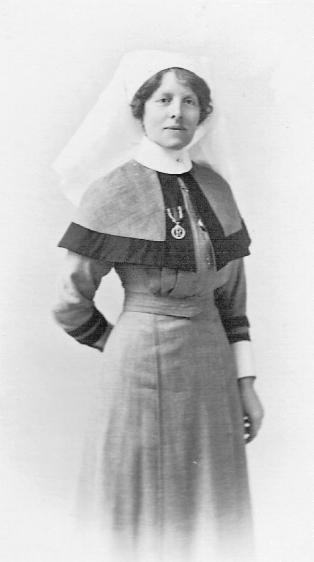
**
Q.A.I.M.N.S. RESERVE STAFF NURSE
As for the Nursing Sister except there were no scarlet bands on the sleeves of the dress.

In this photo the service badge is on the left-hand lapel. Rather surprising that she got it wrong.
**
3. TERRITORIAL FORCE NURSING SERVICE
The Territorial Force Nursing Service was established by R. B. Haldane in March 1908 following the Territorial and Reserve Forces Act (1907), and was intended to provide nursing staff for the twenty-three territorial force general hospitals planned for the United Kingdom in the event of war. Following the outbreak of war in 1914 many of the members were posted overseas to help staff military hospitals, and recruitment to the service was rapid, more than 8,000 trained nurses serving as members of the TFNS during the Great War.

T.F.N.S. MATRON
Blue-grey cape with scarlet facings with silver ‘T’ at each corner. Dress of blue-grey material the same colour as the cape, with one row of braiding on the sleeves. White linen collar and scarlet cuffs and white muslin cap. Silver service badge, with the ‘double-A’ cypher of Queen Alexandra, worn on the right lapel of the cape.

**
T.F.N.S. NURSING SISTER
Blue-grey cape with scarlet facings with silver ‘T’ at each corner. Dress of blue-grey washing material the same colour as the cape, with a band of the same material edged with scarlet, worn on the right sleeve six inches above the wrist, to wear on duty in the hospital. White linen collar and cuffs and white muslin cap. Silver service badge, with the ‘double-A’ cypher of Queen Alexandra, worn on the right lapel of the cape.
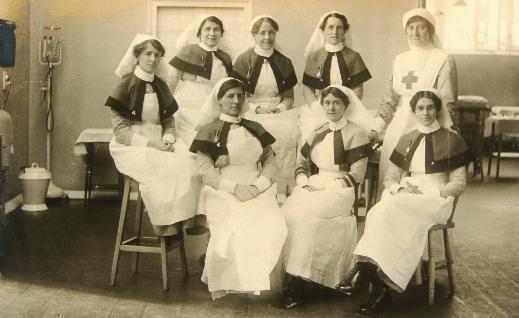
In the photo above, the scarlet stripes on the sleeve of the Nursing Sister are identical to those of Q.A.I.M.N.S. and the Reserve. However, this was a wartime compromise, and the original 'band of the same material edged with scarlet' had become rare. However, they are visible in the photo below, worn on the right arm of two nurses on the left, though not in great detail.
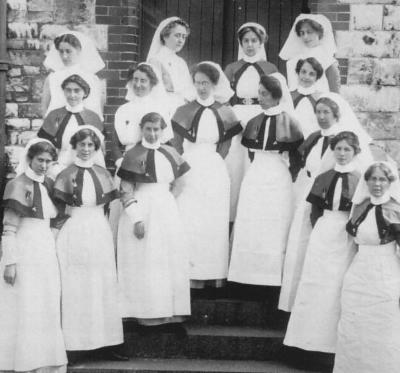

**
T.F.N.S. STAFF NURSE
As for the Nursing Sister except there were no grey/red bands worn on the sleeves of the dress.

**
CIVIL HOSPITAL RESERVE
The Civil Hospital Reserve was formed in 1910 to supplement the nursing services in military hospitals in wartime. Some of the largest of the United Kingdom's civil hospitals were invited by the War Office to maintain a register of their trained nursing staff who would offer their services to the War Office, and who would be willing to mobilize on the outbreak of hostilities, on the understanding that their jobs would be protected, and they would be able to return to their former roles at the end of the war. These women served under the same conditions as, and wore the uniform of, Q.A.I.M.N.S. Reserve, but did not wear the service badge of the Reserve on their cape. Many photos of military nurses show women with no service badge on the cape, but not all of these are members of the C.H.R. Due to metal shortages during wartime there were several periods when service badges for the Q.A.I.M.N.S. Reserve were in short supply and nurses went many months without badges to wear. The majority of members of the Civil Hospital Reserve transferred during wartime to Q.A.I.M.N.S. Reserve and finished the war wearing the Reserve service badge.
*****
If you're trying to identify or date the uniform of a VAD or other untrained WW1 nurse, see this page
VAD UNIFORM - IDENTIFYING STYLE AND DATE
If you're trying to identify or date the uniform of a VAD or other untrained WW1 nurse, see this page
VAD UNIFORM - IDENTIFYING STYLE AND DATE